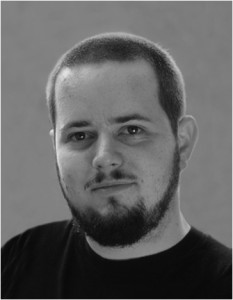Dima Kogan: Ricoh GR IIIx 802.11 reverse engineering
I just got a fancy new camera: Ricoh GR IIIx. It's pretty great, and I strongly
recommend it to anyone that wants a truly pocketable camera with fantastic image
quality and full manual controls. One annoyance is the connectivity. It does
have both Bluetooth and 802.11, but the only official method of using them is
some dinky closed phone app. This is silly. I just did some reverse-engineering,
and I now have a functional shell script to download the last few images via
802.11. This is more convenient than plugging in a wire or pulling out the
memory card. Fortunately, Ricoh didn't bend over backwards to make the reversing
difficult, so to figure it out I didn't even need to download the phone app, and
sniff the traffic.
When you turn on the 802.11 on the camera, it says stuff about essid and
password, so clearly the camera runs its own access point. Not ideal, but it's
good-enough. I connected, and ran
nmap to find hosts and open ports: only port
80 on 192.168.0.1 is open. Pointing curl at it yields some error, so I need to
figure out the valid endpoints. I downloaded the firmware binary, and tried to
figure out what's in it:
dima@shorty:/tmp$ binwalk fwdc243b.bin
DECIMAL HEXADECIMAL DESCRIPTION
--------------------------------------------------------------------------------
3036150 0x2E53F6 Cisco IOS microcode, for "8"
3164652 0x3049EC Certificate in DER format (x509 v3), header length: 4, sequence length: 5412
5472143 0x537F8F Copyright string: "Copyright ("
6128763 0x5D847B PARity archive data - file number 90
10711634 0xA37252 gzip compressed data, maximum compression, from Unix, last modified: 2022-02-15 05:47:23
13959724 0xD5022C MySQL ISAM compressed data file Version 11
24829873 0x17ADFB1 MySQL MISAM compressed data file Version 4
24917663 0x17C369F MySQL MISAM compressed data file Version 4
24918526 0x17C39FE MySQL MISAM compressed data file Version 4
24921612 0x17C460C MySQL MISAM compressed data file Version 4
24948153 0x17CADB9 MySQL MISAM compressed data file Version 4
25221672 0x180DA28 MySQL MISAM compressed data file Version 4
25784158 0x1896F5E Cisco IOS microcode, for "\"
26173589 0x18F6095 MySQL MISAM compressed data file Version 4
28297588 0x1AFC974 MySQL ISAM compressed data file Version 6
28988307 0x1BA5393 MySQL ISAM compressed data file Version 3
28990184 0x1BA5AE8 MySQL MISAM index file Version 3
29118867 0x1BC5193 MySQL MISAM index file Version 3
29449193 0x1C15BE9 JPEG image data, JFIF standard 1.01
29522133 0x1C278D5 JPEG image data, JFIF standard 1.08
29522412 0x1C279EC Copyright string: "Copyright ("
29632931 0x1C429A3 JPEG image data, JFIF standard 1.01
29724094 0x1C58DBE JPEG image data, JFIF standard 1.01
The gzip chunk looks like what I want:
dima@shorty:/tmp$ tail -c+10711635 fwdc243b.bin> /tmp/tst.gz dima@shorty:/tmp$ < /tmp/tst.gz gunzip file - /dev/stdin: ASCII cpio archive (SVR4 with no CRC) dima@shorty:/tmp$ < /tmp/tst.gz gunzip > tst.cpioOK, we have some
.cpio thing. It's plain-text. I grep around it in, looking
for GET and POST and such, and I see various URI-looking things at
/v1/..... Grepping for that I see
dima@shorty:/tmp$ strings tst.cpio grep /v1/ GET /v1/debug/revisions GET /v1/ping GET /v1/photos GET /v1/props PUT /v1/params/device PUT /v1/params/lens PUT /v1/params/camera GET /v1/liveview GET /v1/transfers POST /v1/device/finish POST /v1/device/wlan/finish POST /v1/lens/focus POST /v1/camera/shoot POST /v1/camera/shoot/compose POST /v1/camera/shoot/cancel GET /v1/photos/ / GET /v1/photos/ / /info PUT /v1/photos/ / /transfer /v1/photos/<string>/<string> /v1/photos/<string>/<string>/info /v1/photos/<string>/<string>/transfer /v1/device/finish /v1/device/wlan/finish /v1/lens/focus /v1/camera/shoot /v1/camera/shoot/compose /v1/camera/shoot/cancel /v1/changes /v1/changes message received. /v1/changes issue event. /v1/changes new websocket connection. /v1/changes websocket connection closed. reason( ) /v1/transfers, transferState( ), afterIndex( ), limit( )Jackpot. I pointed
curl at most of these, and they do interesting things.
Generally they all spit out JSON. /v1/liveview sends out a sequence of JPEG
images. The thing I care about is /v1/photos/DIRECTORY/FILE and
/v1/photos/DIRECTORY/FILE/info. The result is a script I just wrote to connect
to the camera, download N images, and connect back to the original access
point:
https://github.com/dkogan/ricoh-download
Kinda crude, but works for now. I'll improve it with time.
After I did this I found an old thread from 2015 where somebody was using an
apparently-compatible camera, and wrote a fancier tool:
https://www.pentaxforums.com/forums/184-pentax-k-s1-k-s2/295501-k-s2-wifi-laptop-2.html














 You might not know who Peter is because he s not very visible on Debian mailing lists. He s very active however and in particular on IRC. He was an admin of the OFTC IRC network at the time Debian switched from Freenode to OFTC. Nowadays he s a member of the Debian System Administration team who runs all the debian.org servers.
If you went to a Debconf you probably met him since he s always looking for new signatures of his GPG key. He owns the best connected key in the
You might not know who Peter is because he s not very visible on Debian mailing lists. He s very active however and in particular on IRC. He was an admin of the OFTC IRC network at the time Debian switched from Freenode to OFTC. Nowadays he s a member of the Debian System Administration team who runs all the debian.org servers.
If you went to a Debconf you probably met him since he s always looking for new signatures of his GPG key. He owns the best connected key in the  I picked up a couple of cheap Linux devices at the weekend. First of all, a $99 Android tablet from CVS, made by Craig. It's a generic RK2818 device and of course it's lacking any kind of GPL offer in the documentation. As far as I know the only company that's released any Rockchip source so far has been Archos, and even then they haven't released the tools you need to actually build an image - they seem to be floating around the internet anyway. But it's straightforward to get it to run the Android market, and it runs
I picked up a couple of cheap Linux devices at the weekend. First of all, a $99 Android tablet from CVS, made by Craig. It's a generic RK2818 device and of course it's lacking any kind of GPL offer in the documentation. As far as I know the only company that's released any Rockchip source so far has been Archos, and even then they haven't released the tools you need to actually build an image - they seem to be floating around the internet anyway. But it's straightforward to get it to run the Android market, and it runs 